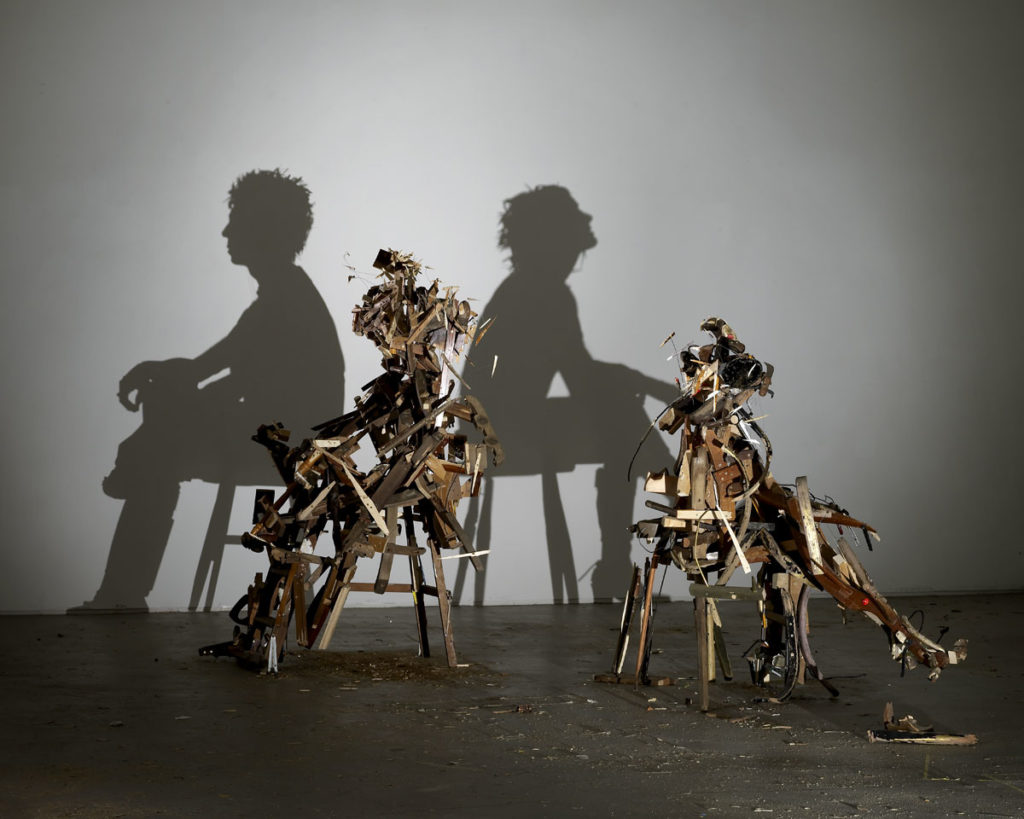Using shadows as sources of entertainment is something we’re all familiar with. Whether it’s making the dog face with your hands on the projection screen when your teacher’s back is turned or watching your own shadow strike monstrous poses on the sidewalk on a sunny day, we’ve all played with the way that postures and positions blocking a light source can create a world quite different than the one we inhabit. Some of my favorite shadow art takes what looks to be absolute garbage but is transformed into a stunningly realistic scene when its shadow is cast, such as the work of Tim Noble and Sue Webster in their 2009 work Wild Mood Swings in which the broken components of two wooden stepladders and other wood scraps were transformed into a pair of seated individuals.
Previous projects have explored the possibilities for casting representations of various religions, faces of famous people, words, or abstract images. The objects that cast the shadows range in size from a few inches across to a foot or more in diameter.
These kinds of creations lend themselves particularly well to 3D printing and 3D design as they require the ability to place on separate planes all of the different shapes in exact relationship to one another that are required to come together to form the final images. This is the kind of precision and three-dimensional thinking that these AM technologies are best at, a sort of native media for these shadow clouds.
“The idea of shadow clouds can be summarized as follows: the shadow cast by flat, thin elements depends on their relation to the direction of illumination: elements perpendicular to illumination cast clear shadows, while the shadows of elements parallel to illumination are practically invisible. Moreover, the elements perpendicular to the illumination can be arbitrary shifted along the illumination without changing the overall shadow cast by all the elements. This allows for a random, cloud-like placement of elements in space,” the designers describe the art.
In addition to the images created, the objects themselves are enjoyable to look at, unlike the trash heaps required by Noble and Webster for their creations, but that’s simply part of the point. 3D printing can do the same messy job that humans have been doing in a neat and precise way. Then, it’s just a matter of figuring out which transformation – garbage to image or pixels to image – you find the most moving. Discuss in the 3D Printed Shadow Clouds forum at 3DPB.com.
[Source: i.materialise]
